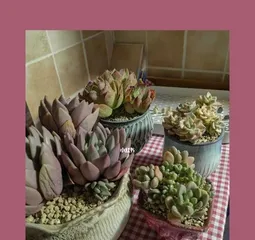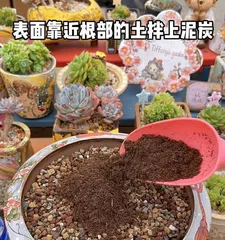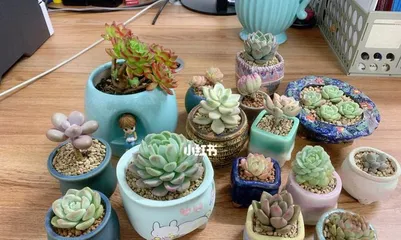Succulent plants are very easy to care for and are perfect for growing at home and in the office. If you want to create a beautiful succulent garden at home, you need to master the methods for repotting succulents and the key points for their care.

I. Choosing the Right Pot
Before repotting your succulent, you need to choose a suitable pot. The size and shape of the pot should match the size and shape of the plant, and you should choose a material with good breathability. Ceramic pots or sandy clay pots are recommended.
II. Preparing the Soil
Succulent plants need special soil to grow. You can use commercially available succulent soil or mix your own. Typically, succulent soil should consist of peat, perlite, vermiculite, and sand in a 2:1:1:1 ratio.

III. Cleaning Old Soil and Trimming Roots
Before repotting, you need to clean the old soil and trim the roots. Take the plant out of the old soil, gently clean off the old soil and dead roots, and then trim any overly long or diseased roots.
IV. Adding Stones and Charcoal
Placing some stones and charcoal at the bottom of the pot can improve drainage and ventilation, and also prevent root rot.
V. Filling with New Soil
Cover the bottom of the pot with a layer of new soil, place the plant on top, and then gradually fill in the rest with new soil. When filling, be sure to leave enough space for the plant to grow.

VI. Placement and Watering Schedule
Succulent plants need plenty of sunlight to grow healthily, so they should be placed in a sunny location. A regular watering schedule is also very important, but avoid overwatering, as this can cause root rot.
VII. Pay Attention to Ventilation and Temperature
Succulent plants need good ventilation and suitable temperatures to grow. Especially during hot summer months, it's important to provide shade and ventilation to cool them down and prevent overheating.
VIII. Fertilizing and Pruning
Succulent plants need regular fertilizing and pruning. It is recommended to use a fertilizer specifically for succulents, once a month. Pruning should be done regularly according to the plant's growth to maintain its shape and health.
IX. Pest and Disease Prevention
Succulent plants are susceptible to pests like aphids and mites, so timely measures must be taken for prevention and treatment. At the same time, pay attention to the plant's condition and promptly identify and deal with any unhealthy plants.
X. Avoiding Overcrowding
Succulent plants can easily become overcrowded, which deprives the roots of space and affects growth. Repot or prune the plants in a timely manner to ensure their healthy growth.
XI. Avoiding Excessive Moving
Succulent plants prefer a stable environment, and excessive moving can cause stress and maladaptation. Do not move the position of your succulents frequently to ensure their normal growth.
XII. Propagating Succulents
Succulent plants can be propagated through methods like leaf cuttings, stem cuttings, and division. Before propagating, the parent plant should be well-cared for.
XIII. Seasonal Care for Succulents
The growth and dormancy of succulent plants are related to the seasons. In winter, pay attention to insulation and reduce watering; in spring and summer, increase fertilization and provide some shade; in autumn, reduce watering and avoid excessive fertilization.
XIV. Beautifying Succulents
Succulent plants can be beautified through methods like bonsai and decorative arrangements. You can combine and match succulents of different shapes, colors, and sizes to create a unique succulent garden.
XV. Protecting Succulents
Succulent plants are a valuable plant resource that need to be protected and cared for. We should respect the growth patterns and ecological environment of plants, and rationally use and manage succulent resources so they can play a greater role in our lives.
The methods for repotting succulents and the key points for their care are crucial for creating a beautiful succulent garden. We should choose the right pots and soil, pay attention to cleaning old soil and trimming roots, maintain a regular watering and fertilizing schedule, prevent pests and diseases, avoid overcrowding and excessive moving, and manage propagation and seasonal care. Through the beautification and protection of succulent plants, we can make our lives more beautiful and healthy.